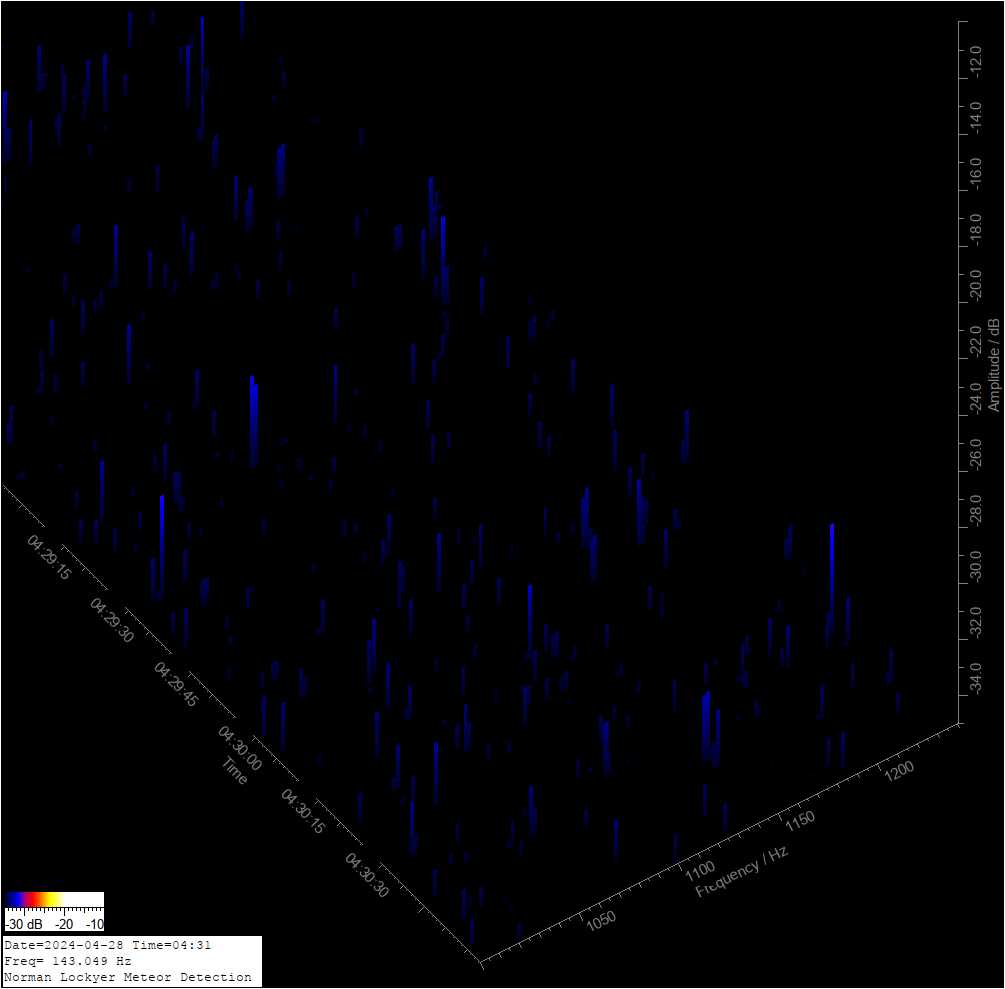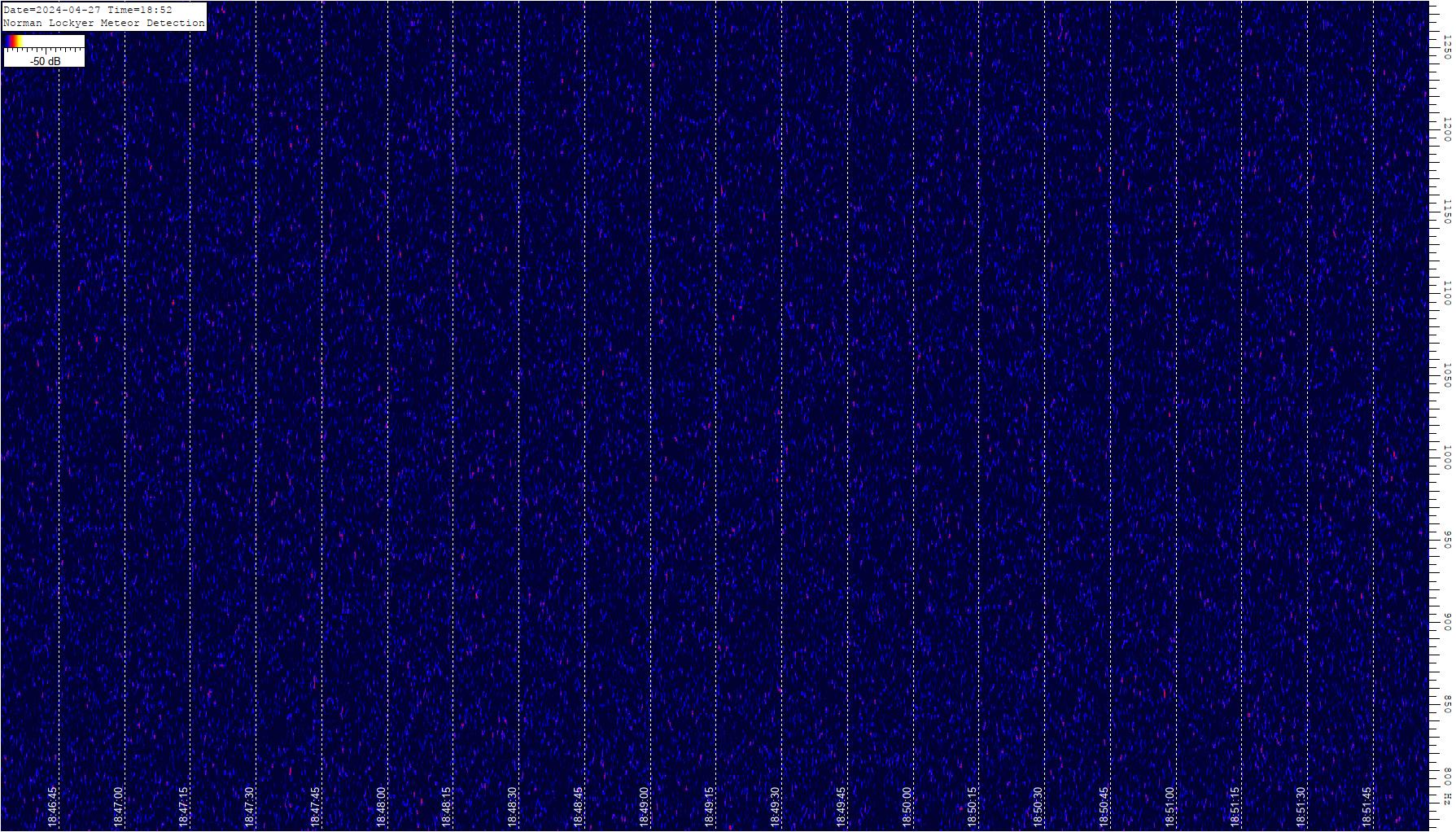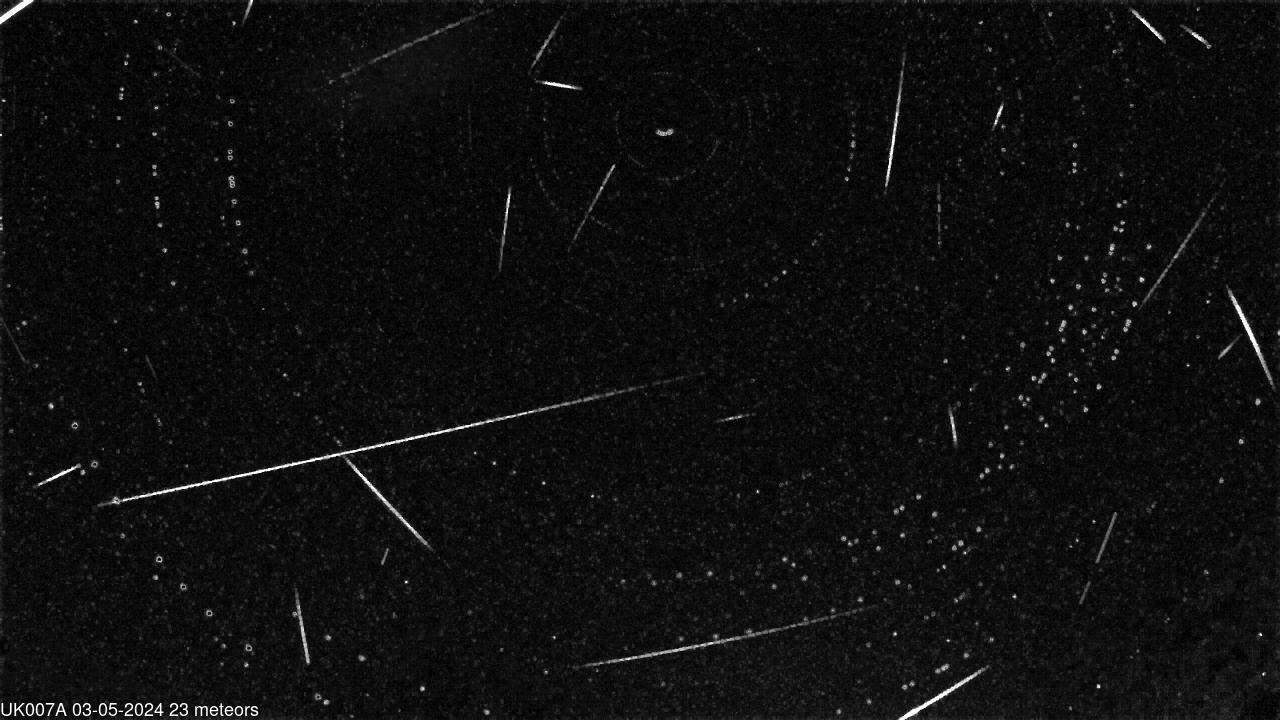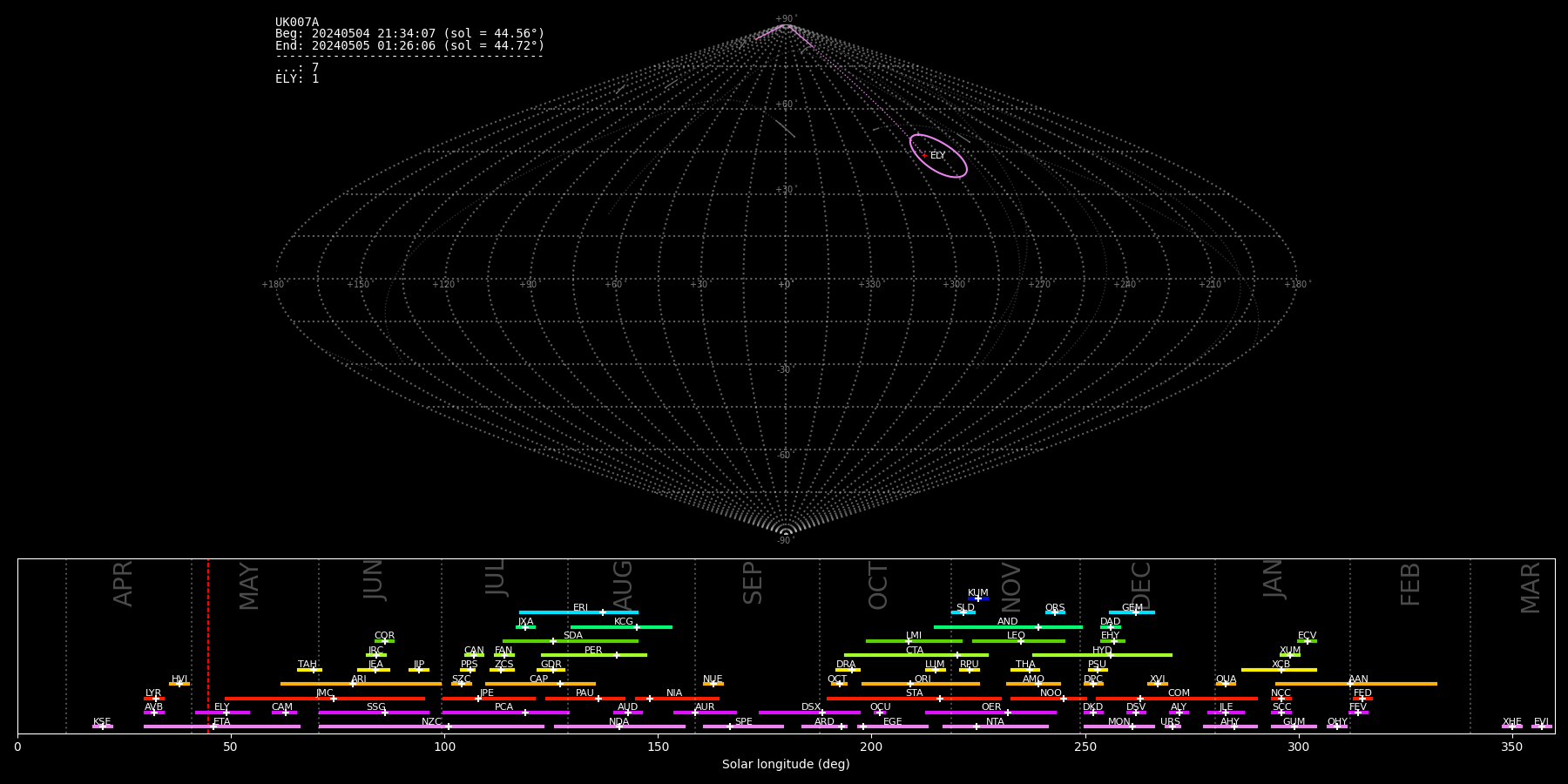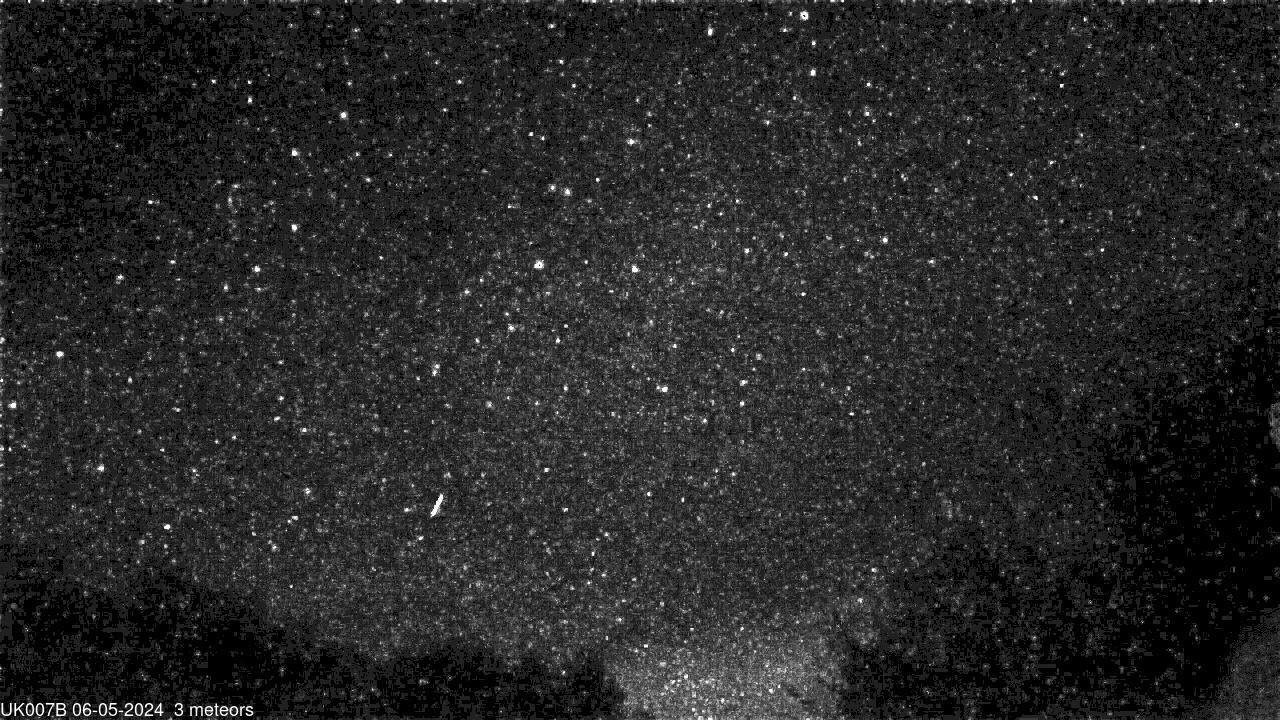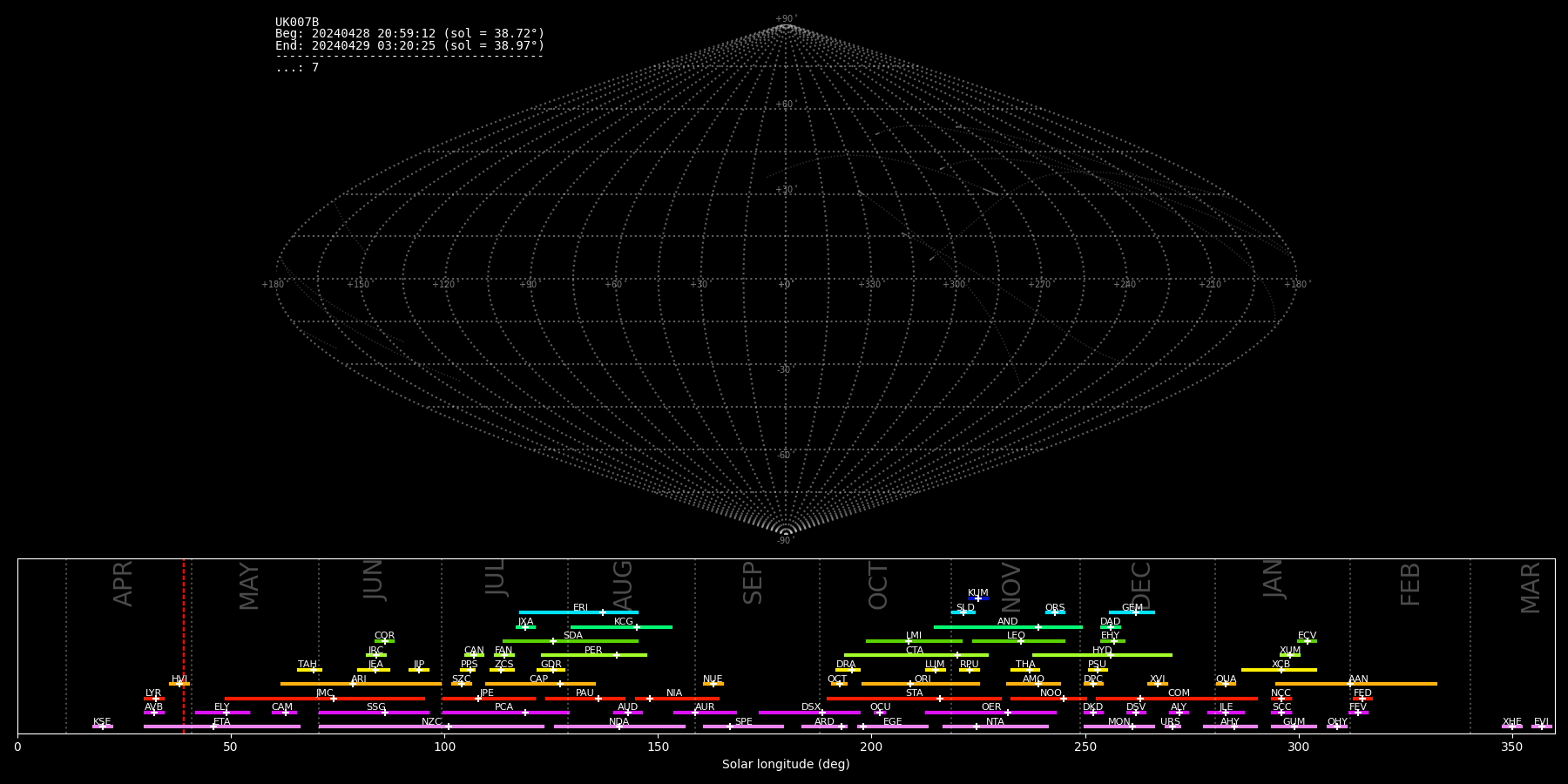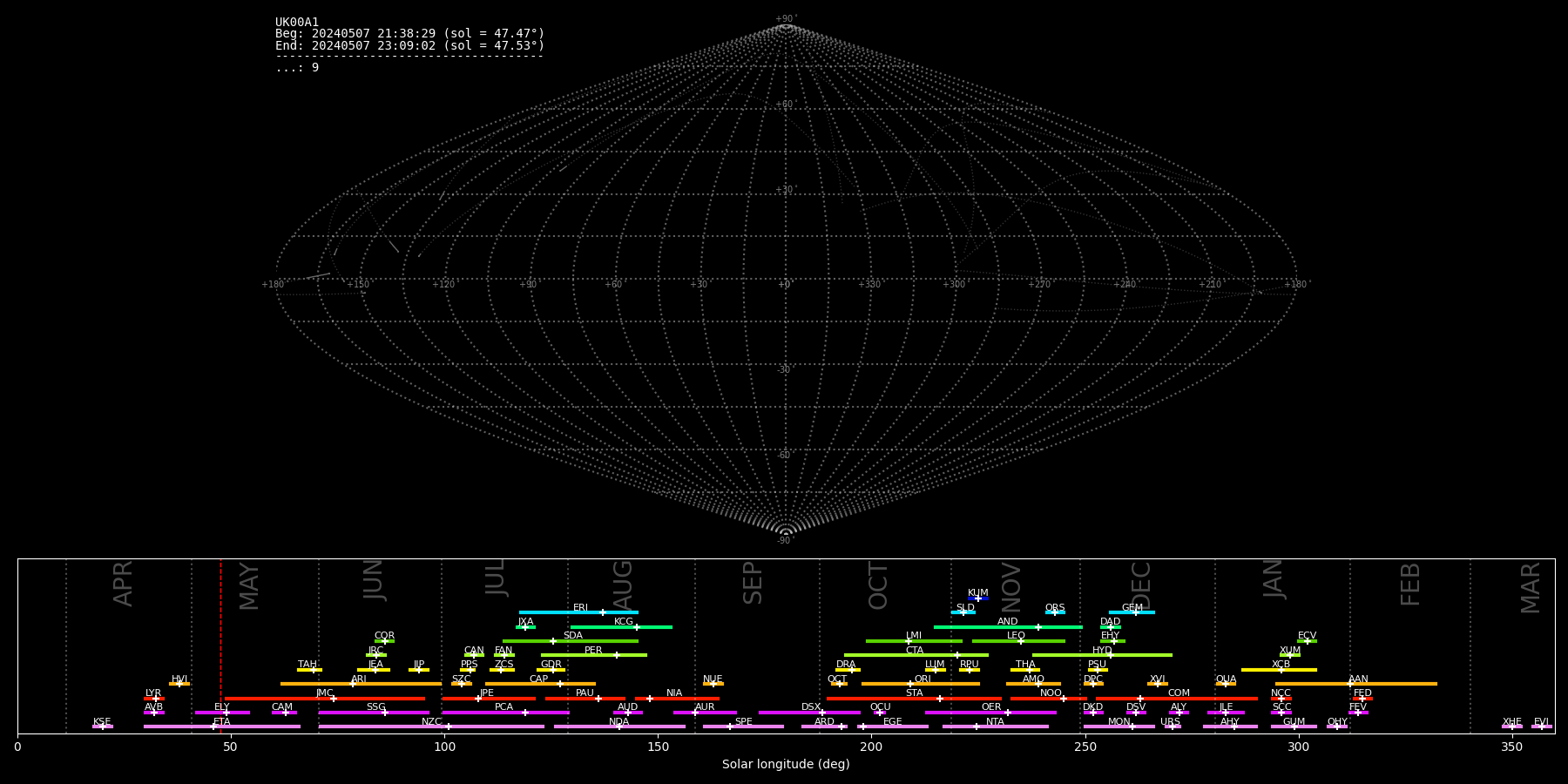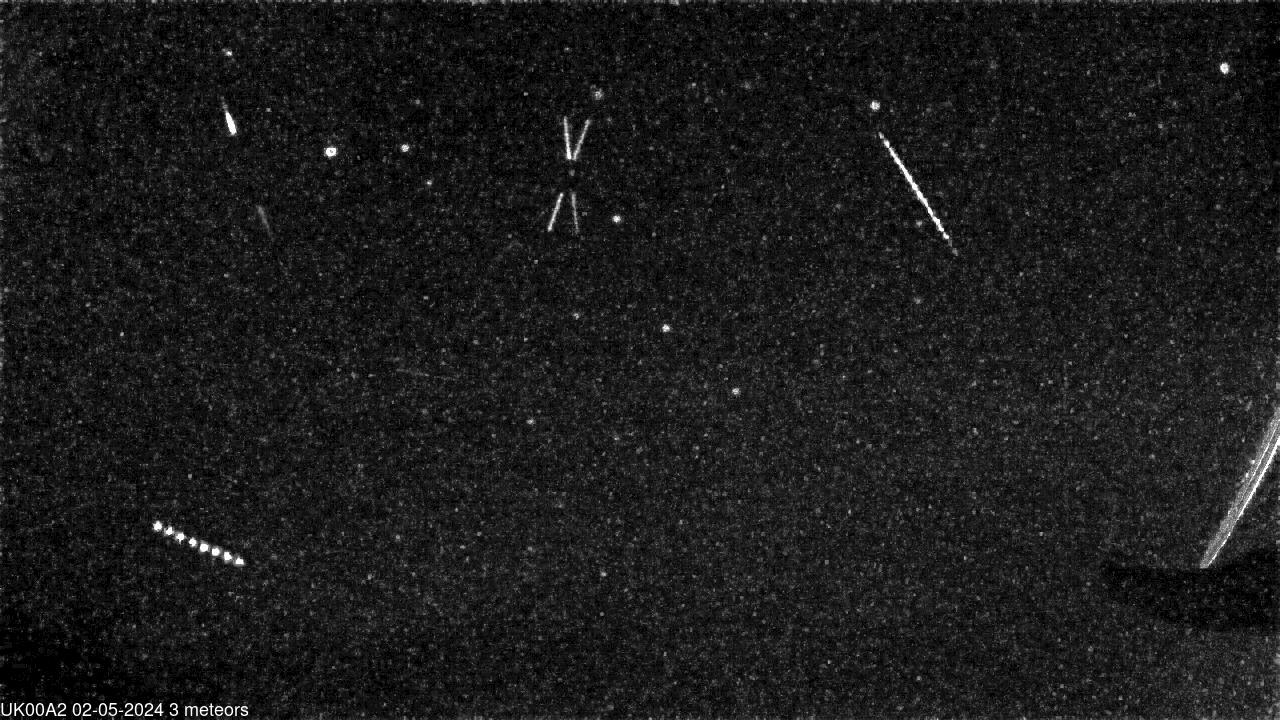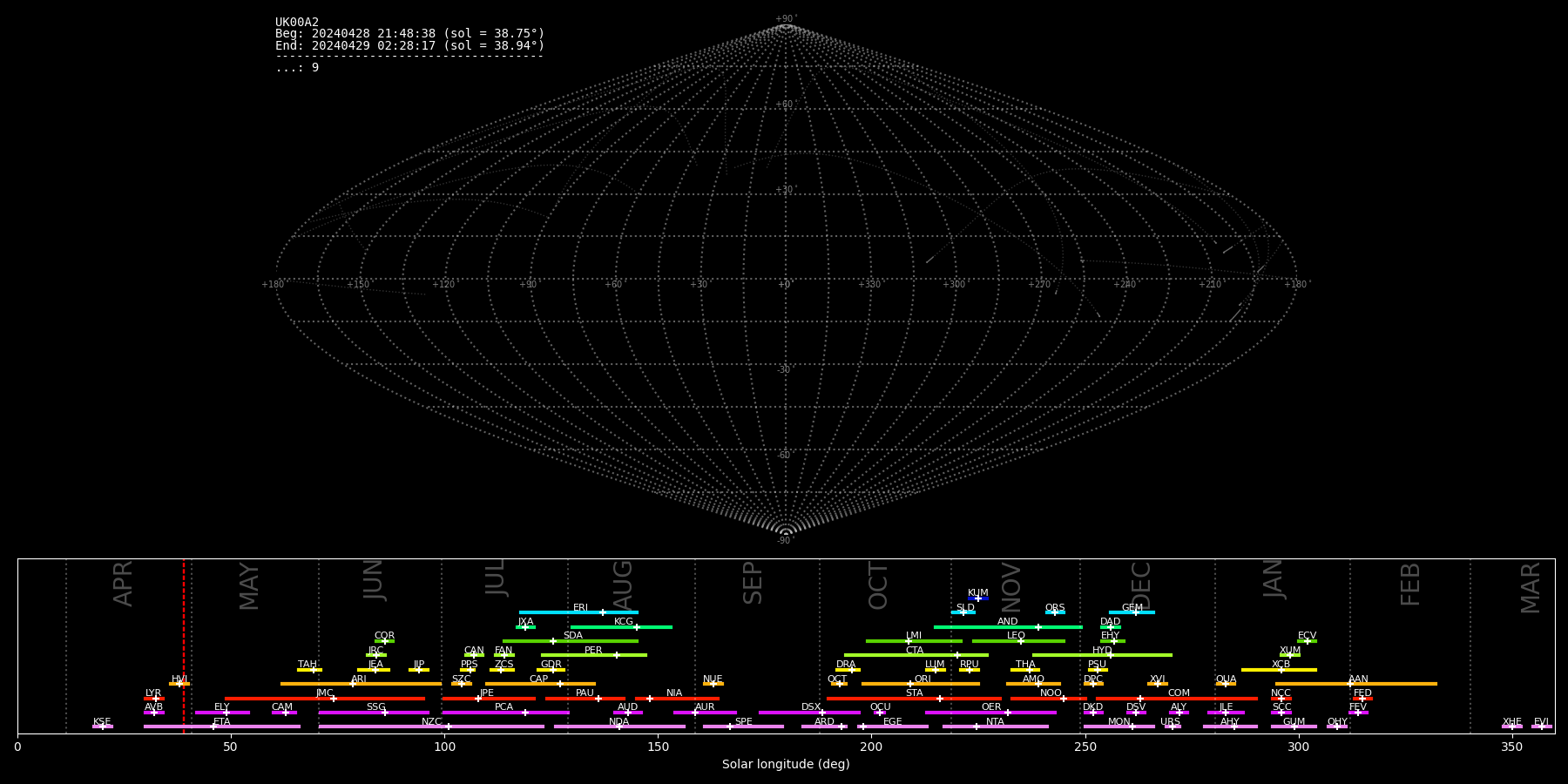Radio detection of meteors
3D and 2D representations of a radio meteor detection. The top images are from the GRAVES transmitter in Dijon. The lower images are from the UK Meteor Beacon at the Sherwood Observatory, Nottingham.
The images above are displaying the detection of meteors as they enter the Earth’s atmosphere, primarily over the southern UK and northern France.
Using modest equipment we can detect the meteors that are travelling at very high speed when they hit our atmosphere and a large amount of energy is released which leaves a trail of ionised gas in the atmosphere that can be short or long depending on a number of factors.
There is a powerful radio transmitter located near Dijon in France that sends out radio waves to detect satellites and space junk. Ordinarily this signal travels from the transmitter out into space and the detection system at the Norman Lockyer Observatory would not be able to pick up this signal. However, when a meteoroid enters the atmosphere the ionised gas trail can reflect radio waves.
These reflected signals are seen on our detection screens. They are seen as sudden peaks on the 3D screen and the colour lightens the stronger the reflected signal becomes, known as “pings”.
The size and speed of these detections help us to determine relative speeds and sizes of meteors. If the ionised stream remains for any length of time, then the detection will be seen to continue for a longer time. This is what is called an “over-dense” meteor, because the ionised trail is still reflecting the signal after the meteor has already burned out (ablated).
Visual detection of meteors
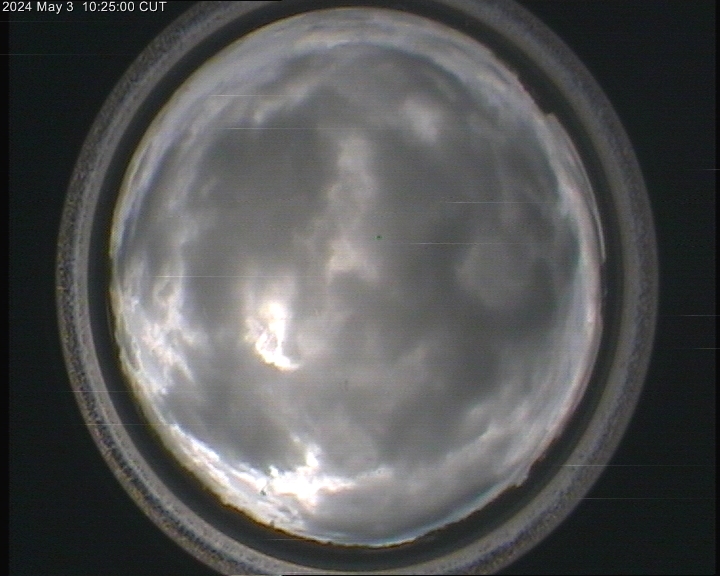
The earth is bombarded by meteors every day. Fortunately, most of these are tiny so there is nothing for you to worry about. These meteors are seen as bright flashes of light in the night sky which simple inexpensive cameras can detect and record.
Our cameras monitor the night sky and record these flashes or streaks of light that may be meteors.
At the end of the night the system automatically analyses the data that is coupled with data from other cameras around the world.
This provides scientific quality data that professional bodies around the world use for further studies, which can include the identification of new meteor showers and the final trajectory of meteors to assist in the potential recovery of meteorites.
The latest images from our cameras are shown below.

